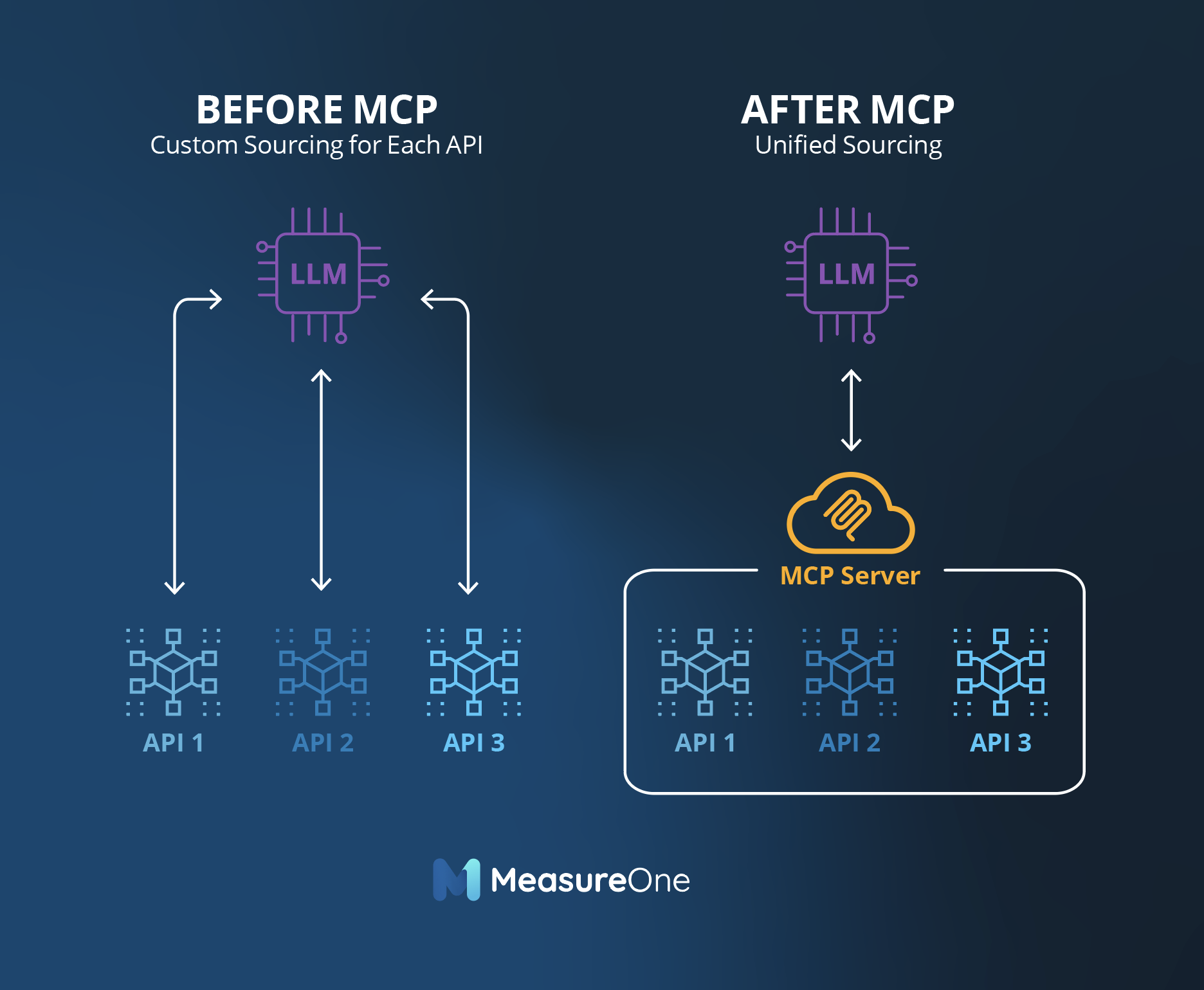Contents
- What an MCP workflow looks like in action
- How agentic workflows and MCP transform automation
- Why MCP agent workflows are the next step in AI adoption
- The rise of MCP AI workflows and business efficiency
- The future of connectivity and context
Model Context Protocol (MCP) is the new standard of AI enablement. It facilitates secure access to external data and tools between AI systems and AI agents in real time. Rather than operating in isolation, MCP allows AI to work with context, connecting to accurate, live information from verified data sources.
For businesses leveraging AI to automate data-heavy workflows like insurance verification, consumer data collection, or document processing, MCP represents a major leap forward. It enables AI to perform in a way that’s not just fast but also reliable and intelligent.
What an MCP workflow looks like in action
An MCP workflow connects AI systems with the external data they need to operate effectively. Instead of feeding static data into a model with multiple tools or even manually uploading documents, MCP creates a structured connection between the AI model and real-world data sources in one unified function.
For example, imagine an auto lender is using an AI agent to verify a borrower’s insurance policy. Without MCP, the AI might rely on outdated or incomplete data, multiple APIs relying on various integrations, and convoluted requests from end users. With MCP, that same AI agent can securely access the most recent insurance information directly from trusted sources in one instant action, enabling a swift, accurate decision.

This connectivity is what sets MCP apart. It doesn’t just make automation possible; it makes it even quicker, more reliable, and exponentially powerful.
How agentic workflows and MCP transform automation
Traditional automation systems follow predefined rules. But agentic workflows with MCP introduce something more sophisticated: intelligent decision-making.
Agentic workflows use AI “agents” capable of reasoning, making requests, and interacting with other systems or tools autonomously. The MCP acts as the secure communication layer that allows those agents to interact safely and contextually with external data or applications.
Here’s what that looks like in practice:
- An AI agent identifies missing or outdated data in a customer record.
- Using MCP, it connects directly to a verified data source—like MeasureOne—to retrieve or update that data in real time.
- The workflow continues automatically, without human intervention or delay.
This combination of MCP and agentic workflows allows businesses to scale automation while maintaining the integrity and accuracy of their data. It’s the difference between running an isolated script and orchestrating a connected, intelligent system that learns, updates, and adapts.
Why MCP agent workflows are the next step in AI adoption
Businesses everywhere are experimenting with AI, but few have achieved full integration between AI tools and their existing systems. That’s largely because most models lack connectivity. They can analyze and predict, but they can’t act without the right data infrastructure in place.
MCP agent workflows solve this by providing a standard framework for communication between AI and external data. Instead of relying on dozens of APIs or complex custom integrations, MCP provides a unified protocol that ensures AI agents have secure, real-time access to exactly what they need.
For organizations using MCP, like from MeasureOne, this means AI can now:
- Verify and update consumer data instantly
- Cross-check insurance or financial records automatically
- Feed accurate, up-to-date data into decision-making models
- Reduce manual input errors and delays
The rise of MCP AI workflows and business efficiency
As MCP becomes more widely adopted, we’ll see an entirely new class of MCP + AI workflows take off; ones where AI systems operate not just as tools, but as active participants in business operations.
These workflows will make it possible for businesses to connect AI agents to live databases and APIs without manual setup, run verifications or validations automatically, triggered by business events, reduce friction across departments that rely on data accuracy, and even build end-to-end automation systems that continuously learn and improve
The future of connectivity and context
MeasureOne’s platform is already built to support this kind of AI-driven connectivity.
By offering secure, automated access to verified data, including insurance, income, tax, and education information, MeasureOne provides the trusted data backbone for any consumer verification workflow. And when combined with MCP, MeasureOne’s data connectivity makes AI-powered workflows not only possible, but practical and enables businesses to move from testing AI tools to building AI ecosystems.
Get started with MeasureOne today to explore MCP tech.

